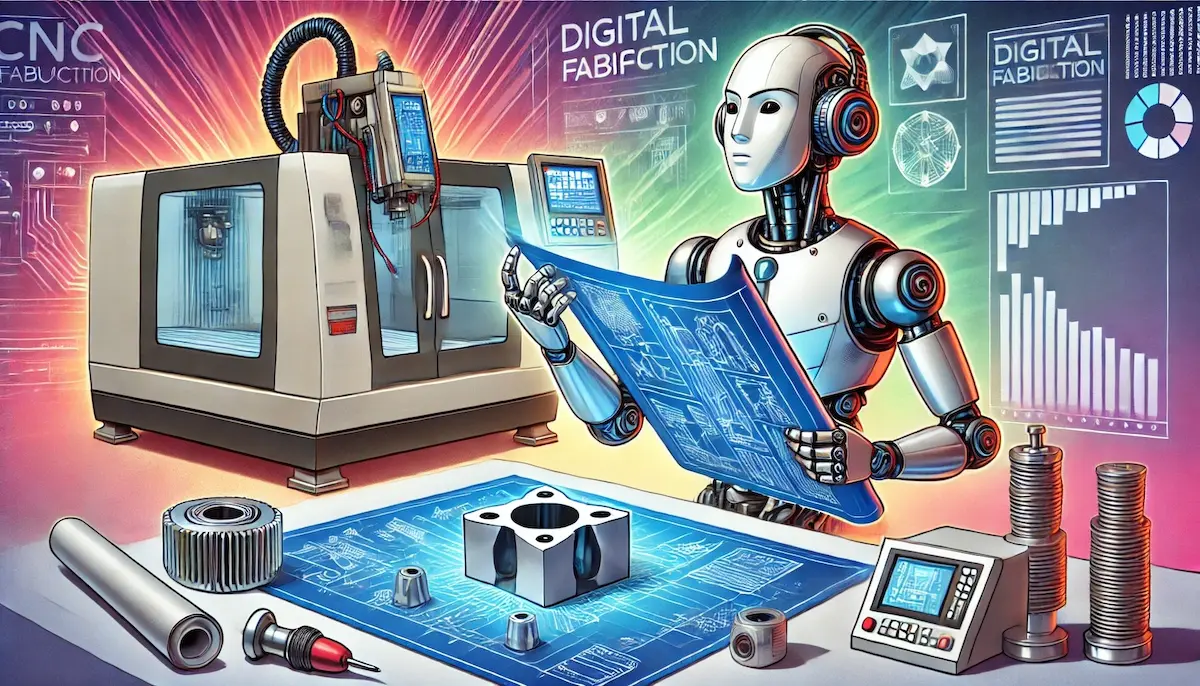Digital fabrication is transforming the way we create and manufacture products by leveraging advanced digital technologies. This process involves the use of computer-controlled tools and machinery to design, prototype, and produce physical objects from digital models. This article will explore the key aspects of digital fabrication, its significance, and its applications across various industries.
What is Digital Fabrication?
Digital fabrication refers to the process of using digital technologies to manufacture physical objects. This includes a range of techniques such as 3D printing (additive manufacturing), CNC machining (subtractive manufacturing), and laser cutting. These methods allow for precise control over the production process, enabling the creation of complex and intricate designs with high accuracy.
Importance of Digital Fabrication
Enhances Design Precision
Digital fabrication tools are controlled by computer-aided design (CAD) software, allowing for extremely precise and accurate production. This precision is critical for creating detailed and complex parts that meet stringent specifications.
Speeds Up Prototyping and Production
By automating the manufacturing process, digital fabrication significantly reduces the time required for prototyping and production. Designers can quickly create and test prototypes, make necessary adjustments, and move to full-scale production with minimal delays.
Reduces Waste
Digital fabrication methods such as 3D printing use only the material necessary to create the object, minimizing waste. Subtractive methods like CNC machining can also be optimized to reduce material usage, making the production process more sustainable.
Enables Customization
Digital fabrication allows for the creation of customized and personalized products. This capability is particularly valuable in industries such as healthcare, where bespoke medical devices and implants can be tailored to individual patients’ needs.
Supports Complex Geometries
With digital fabrication, manufacturers can produce complex geometries and intricate designs that are difficult or impossible to achieve with traditional manufacturing methods. This opens up new possibilities for innovation and creativity.
Applications of Digital Fabrication
Healthcare
In the healthcare sector, digital fabrication is used to produce custom prosthetics, orthotics, and implants. It enables the creation of patient-specific models for surgical planning and training, improving outcomes and reducing recovery times.
Aerospace
The aerospace industry leverages digital fabrication to produce lightweight and complex components that enhance performance and fuel efficiency. Parts such as engine components, brackets, and ducts are commonly produced using digital fabrication techniques.
Automotive
In the automotive industry, digital fabrication is used for rapid prototyping, tooling, and the production of end-use parts. This technology allows manufacturers to quickly iterate on designs, produce custom components, and reduce the lead time for new product development.
Architecture and Construction
Digital fabrication is revolutionizing architecture and construction by enabling the creation of complex structures and building components. Techniques such as 3D printing and CNC machining are used to produce custom architectural elements, from facade panels to intricate interior details.
Fashion and Design
Designers in the fashion industry are using digital fabrication to create unique and innovative garments, accessories, and jewelry. This technology allows for the production of intricate patterns and custom designs that are not feasible with traditional methods.
Education
Educational institutions are incorporating digital fabrication into their curricula to enhance learning in science, technology, engineering, and mathematics (STEM) fields. Students can design and fabricate physical models, gaining hands-on experience and a deeper understanding of theoretical concepts.
Steps to Implement Digital Fabrication
1. Develop Digital Models
The first step in digital fabrication is creating accurate digital models using CAD software. These models serve as the blueprint for the fabrication process and must be detailed and precise.
2. Choose the Appropriate Fabrication Method
Selecting the right digital fabrication method depends on the material, design complexity, and intended use of the final product. Options include 3D printing, CNC machining, and laser cutting, each with its own strengths and limitations.
3. Prepare for Fabrication
Preparing for fabrication involves setting up the digital file, configuring the fabrication machine, and selecting the appropriate materials. Proper preparation ensures optimal results and reduces the likelihood of errors.
4. Fabricate the Object
The actual fabrication process involves the machine executing the digital design, layer by layer or through subtractive methods, to create the physical object. Monitoring the process ensures quality and allows for adjustments if necessary.
5. Post-Process the Object
Post-processing may be required to achieve the desired finish and functionality. This can include cleaning, sanding, painting, or assembling multiple parts.
6. Validate and Iterate
After fabrication, it’s important to validate the object’s performance and quality. This may involve testing for strength, durability, and accuracy. Based on the results, designers may need to iterate on the design and fabrication process to achieve the desired outcomes.
Conclusion
Digital fabrication is a transformative technology that offers numerous benefits, including enhanced design precision, rapid prototyping, reduced waste, customization, and the ability to create complex geometries. Its applications span various industries, from healthcare and aerospace to automotive and fashion. By adopting digital fabrication, organizations can drive innovation, improve efficiency, and create new opportunities for growth. Blockfine thanks you for reading and hopes you found this article helpful.
